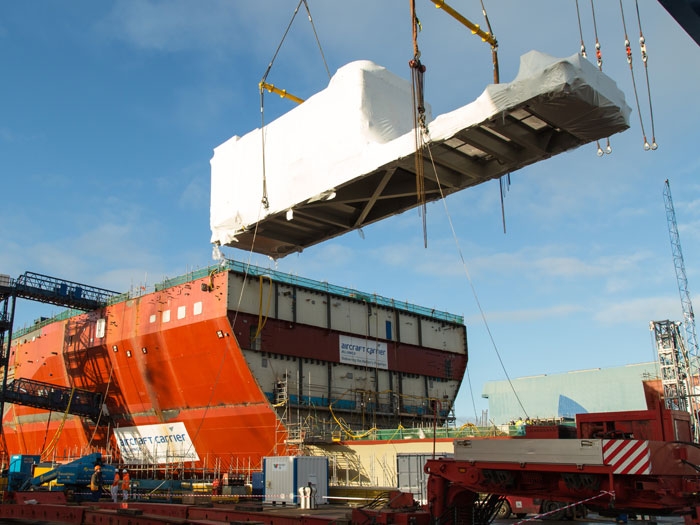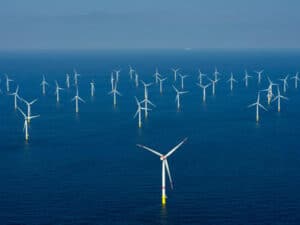
Gas Turbine Alternator package installed in U.K. carrier
Written by Nick Blenkey
MARCH 6, 2015 — The Aircraft Carrier Alliance (Babcock, BAE Systems and Thales U.K. plus the U.K. Ministry of Defence) has successfully completed the installation of the first Rolls-Royce MT30 Gas Turbine Alternator (GTA) package into HMS Prince of Wales, the Royal Navy’s second Queen Elizabeth class aircraft carrier, at Babcock’s Rosyth, Scotland, shipyard.
The gas turbine alternator was installed into the ship in one day, half the time taken for installation in the sister ship HMS Queen Elizabeth.
The MT30, at 36 megawatts (around 50,000 horsepower), is the world’s most power-dense marine gas turbine, a key feature for naval ships where high power in the minimum space is essential.Two MT30s are installed in each ship and will provide two thirds of the 109 megawatts needed to power the 65,000 tonne ships.
Each of the Gas Turbine Alternators (GTA) consist of a Rolls-Royce MT30 gas turbine and an alternator supplied by GE. They also include an alternator and gas turbine enclosure, which together weigh a total of 120 tonnes.
Jim Bennett, Power & Propulsion Director for the Aircraft Carrier Alliance, said: “The Power & Propulsion Sub-Alliance is immensely proud of this significant milestone in the Queen Elizabeth Class (QEC) project. It has been the culmination of many years of hard work to ensure the timely delivery of both complete MT30 gas turbine alternators to HMS Prince of Wales, in a single day, which will deliver around two thirds of the electrical power generated onboard. Congratulations to all involved, this is British engineering at its best!”
Angus Holt, Delivery Director, HMS Prince of Wales, said: “The successful achievement of this major milestone is systematic of the progress we are making with the build of the second Queen Elizabeth Class carrier. To have successfully lifted the most powerful engine in the Royal Navy onto the biggest ship ever built for the Royal Navy, using one of the biggest capacity gantry cranes in Europe, is an important event in the construction of HMS Prince of Wales. Everyone involved should take huge pride in their contribution to this national endeavour.”
Don Roussinos, Rolls-Royce, President – Naval said: “The installation of the MT30s for HMS Prince of Wales marks yet another significant milestone in the Queen Elizabeth Class program. These aircraft carriers will be the backbone of the Royal Navy’s capability for decades to come and we’re proud to be working alongside such a strong team in the Power & Propulsion sub Alliance, as these highly capable ships get closer to entering service.”
The installation involved the lifting of the MT30 gas turbines and associated ancillary equipment – housed in steel gas turbine enclosures – onto the ship structure. With the enclosure in place, the large alternator, which is driven by the gas turbine to produce electrical power, was then hoisted into place.
Once operational, the GTAs will supply high-voltage power to the four propulsion motors as well as the 13 ship service transformers. These transformers distribute low-voltage power to the weapons systems, mission systems equipment and navigation systems, as well as power to the hotel services required to run the ships.
The MT30 gas turbine is derived from the Rolls-Royce Trent 800 aero engine which powers the Boeing 777 aircraft, with around 80 per cent of the parts being the same.
Pairs of MT30 gas turbines currently power the U.S. Navy’s Freedom Class variant of the Littoral Combat Ship and will power the new DDG-1000 destroyers.
Single MT30s will also power each of the U.K. Royal Navy’s new Type 26 frigate, and the Republic of Korea Navy’s new FFXII frigate.
The MT30 is also being considered for a number of key international naval programs, including Italy and Japan, where the demand for high power matches the move to “all-electric” ships.





Leave a Reply
You must be logged in to post a comment.